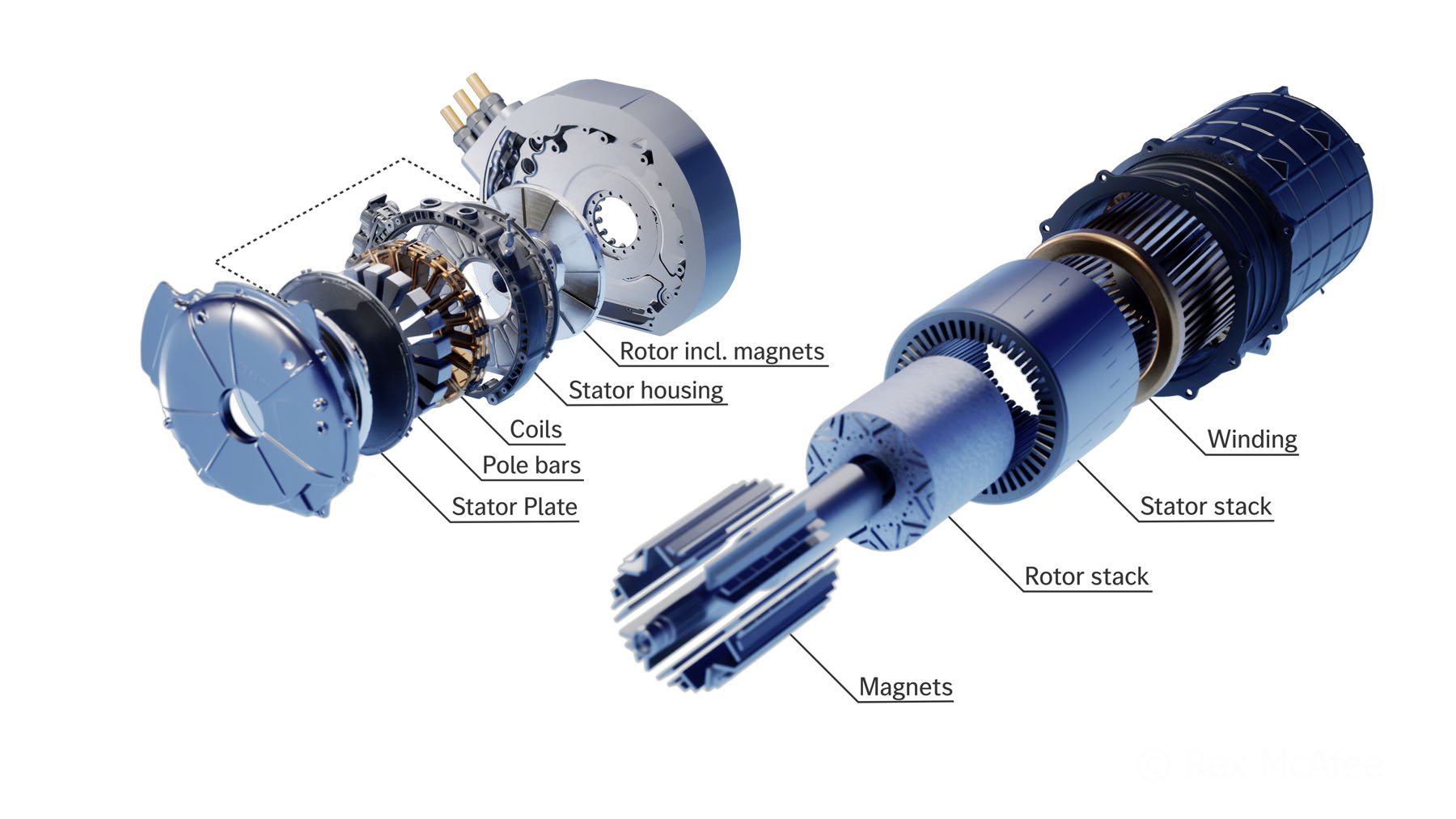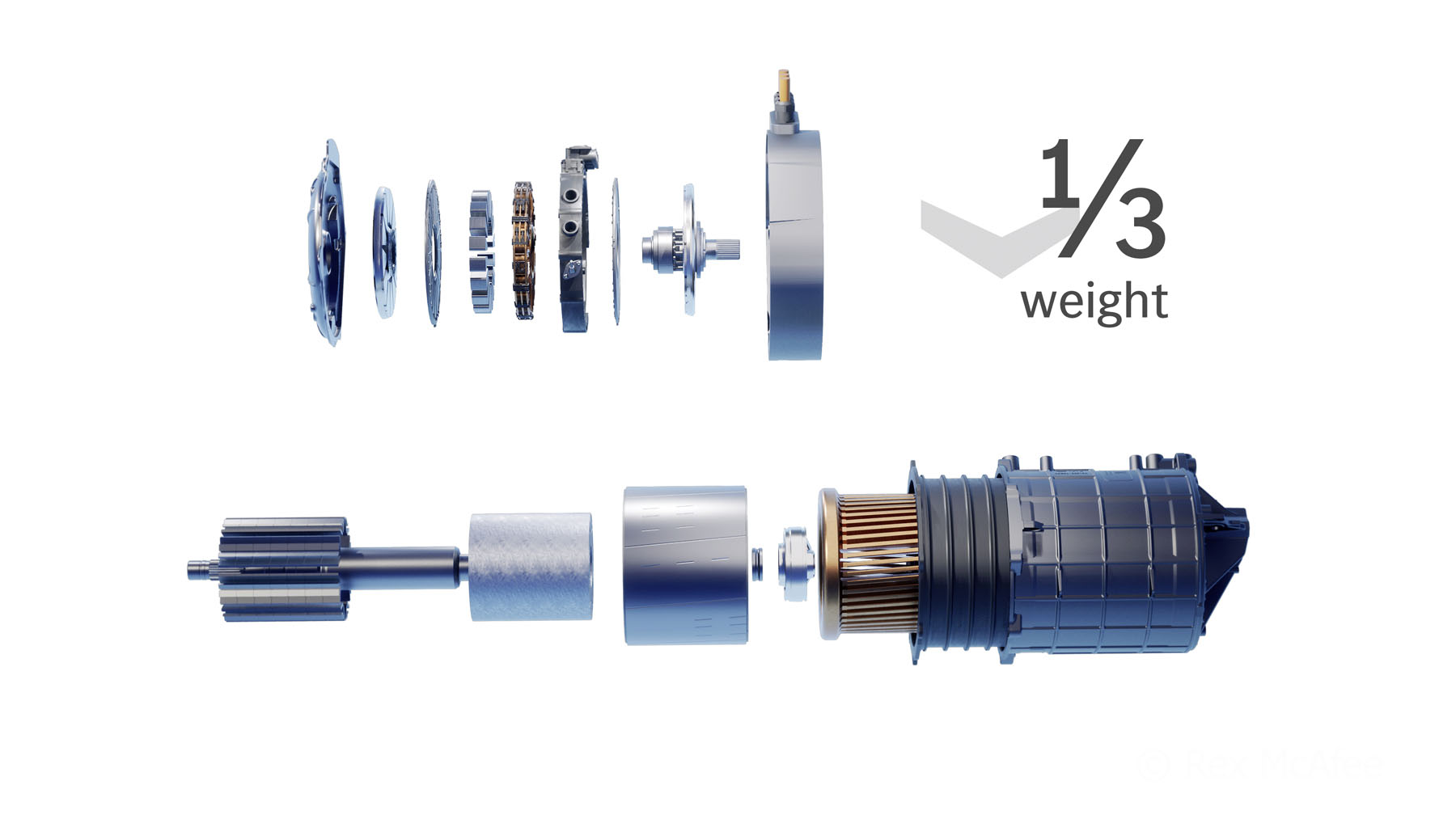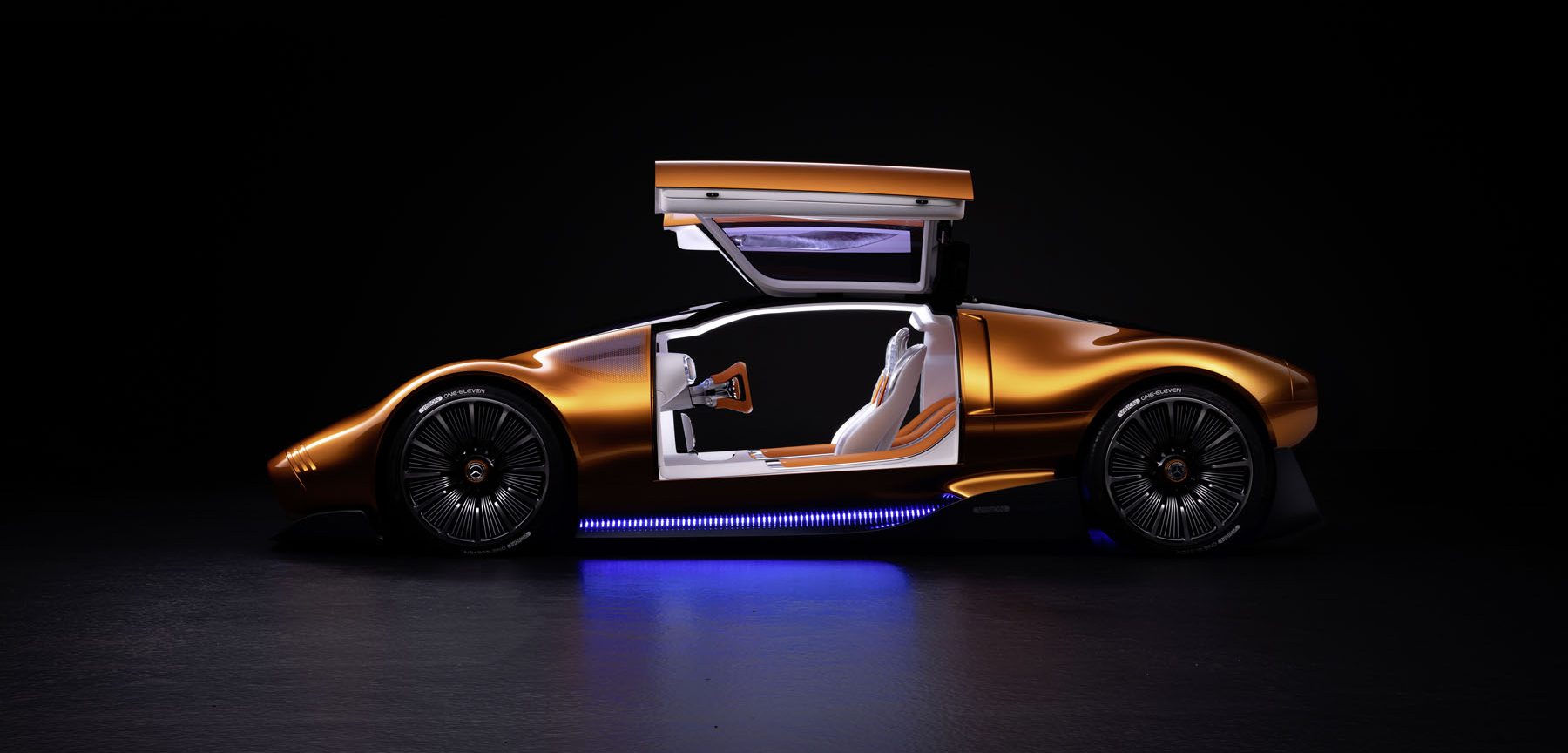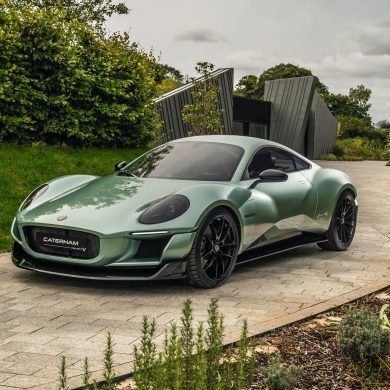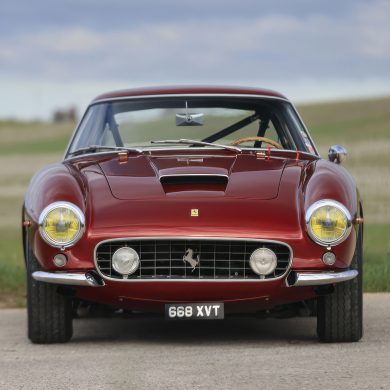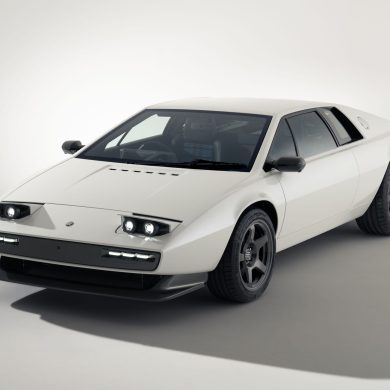Mercedes-Benz Press: A new sports car “study” has been completed. The Vision One-Eleven combines a highly dynamic design language with innovative all-electric powertrain technology. The supercar silhouette is characterized by the skillful execution of the signature Mercedes-Benz One-Bow design that is significant of its 21st-century style. The development of this design underscores the positioning of the Mercedes-Benz brand, which stands for ICONIC LUXURY.
Its technical highlights include the extremely powerful and highly efficient axial-flux motor developed by electric motor specialist YASA. The British company has been a 100-percent subsidiary of Mercedes-Benz AG since July 2021.
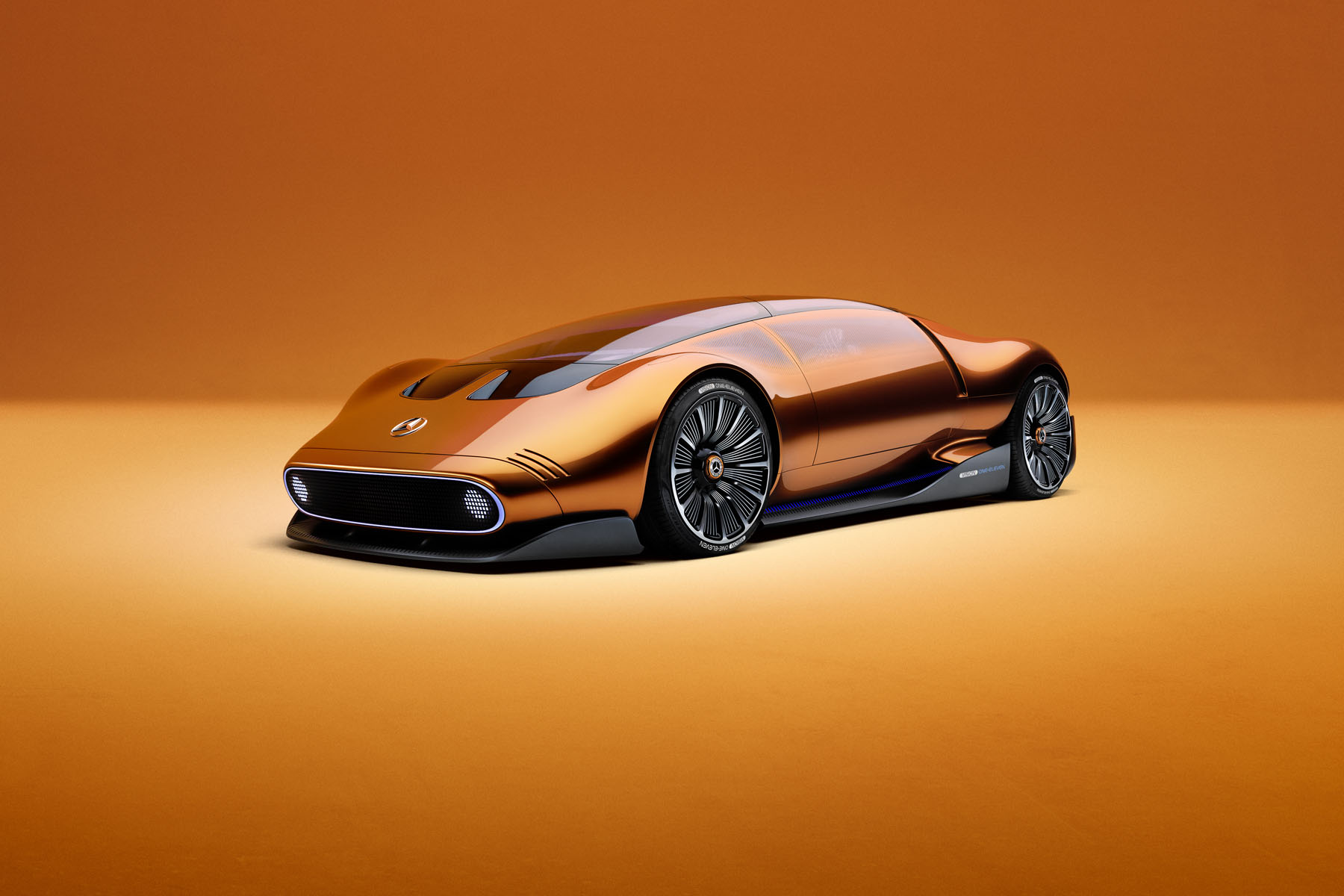
Project Highlights
- Design and technology pioneer in the tradition of legendary C 111 experimental vehicles
- Exterior: sporty interpretation of One-Bow design with high-tech references
- Interior: fuses lounge-like feel with super sports car minimalism
- YASA axial-flux motor signals the future of performance electric drive
- Battery with high-performance liquid-cooled cylindrical cells
The Mercedes-Benz Vision One-Eleven is inspired by the tradition of the legendary C 111 experimental vehicles from the 1960s and 70s, which were used to test revolutionary Wankel and turbodiesel engines. They were also prototypes for testing polymer-based body shells. The extremely (aero)dynamic mid-engine sports cars are considered design icons of their era, not least due to their distinctive gullwing doors and eye-catching orange-and-black paintwork.
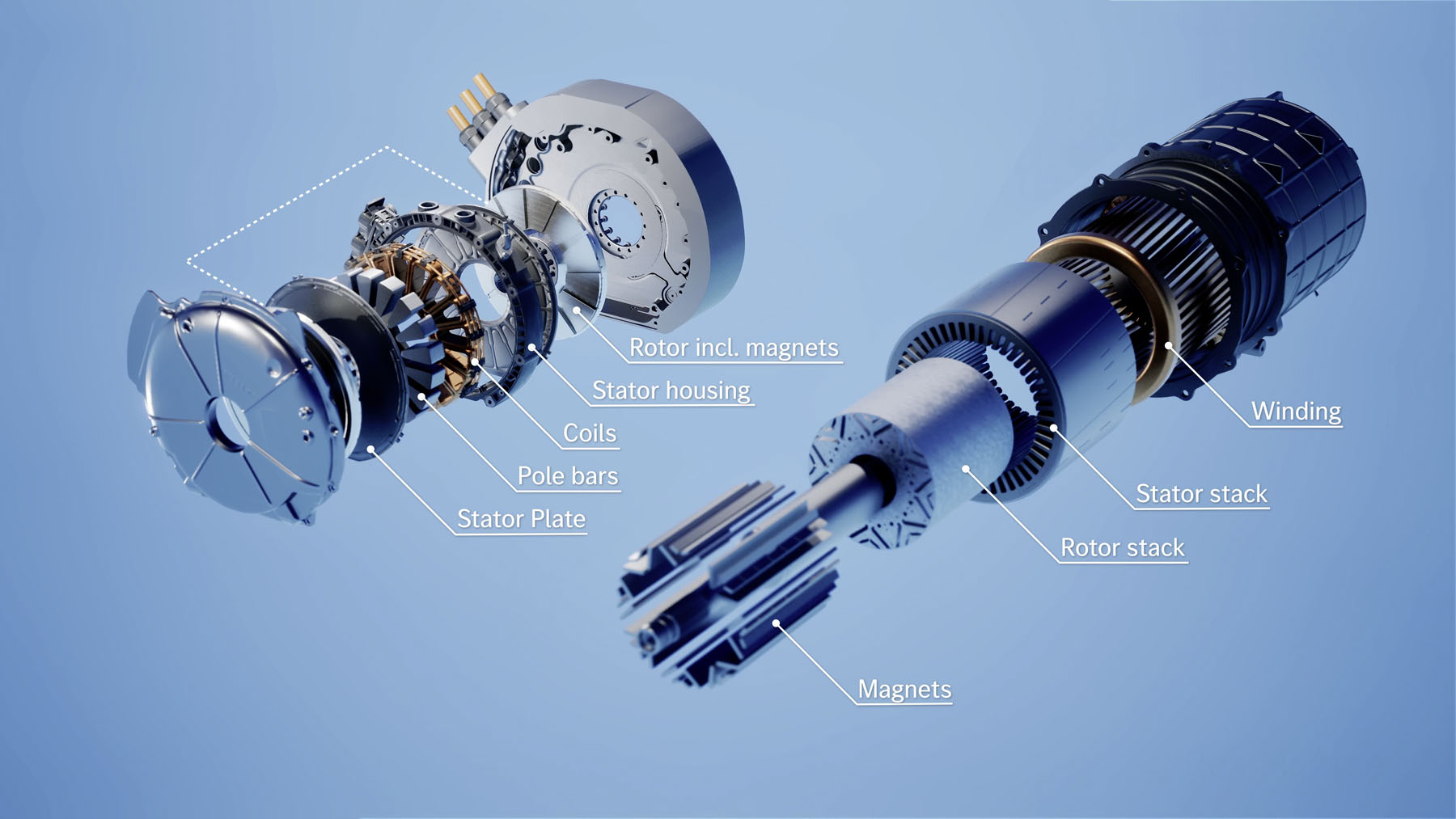
The rear-end design
The rear-end of the Mercedes-Benz Vision One-Eleven is likewise dominated by a powerfully profiled diffuser. Spanning the breadth above it is a display that echoes the shape of its counterpart at the front end and features the same pixelated structure in the red taillights. Similar to the blade profiles along the sides, blue lighting effects are also visible at the rear. The inner face of the wheels is fitted with circular lighting elements.
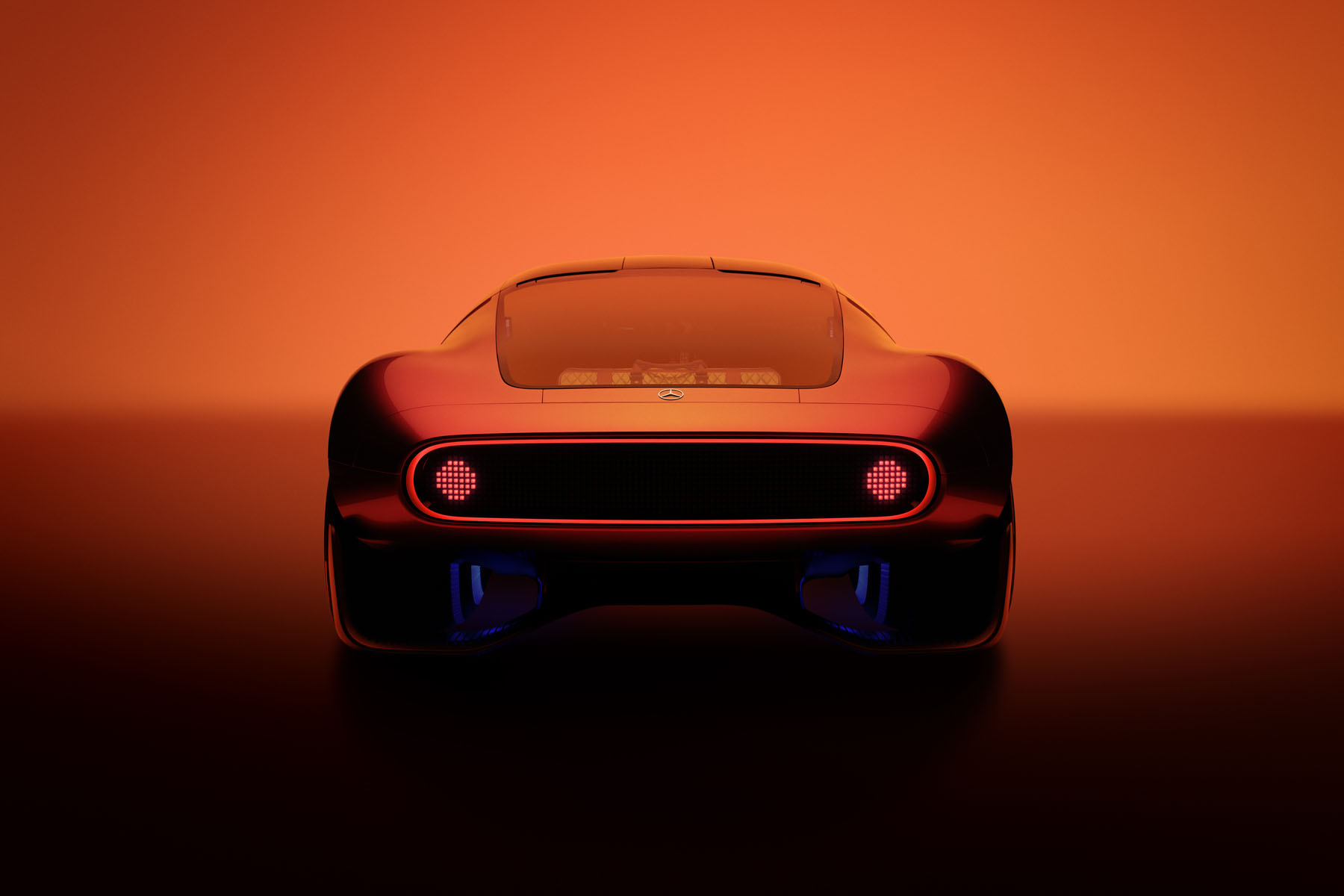
The interior design
Inside, the Mercedes-Benz Vision One-Eleven presents the first sports car interior with a lounge concept. It reflects the paradigm shift from self-driven sports car to autonomous electric vehicle within the super sports car segment and unites two completely different states of being. In race mode with the backrest upright and the compact driver-oriented touchscreen, the interior becomes that of a minimalist driving machine. Conversely, in lounge mode, the seats are fully integrated into the interior sculpture, which merges sills, center tunnel and luggage compartment into a single unit.
This creates a whole new, exceptionally airy spatial concept. In contrast to previous mid-engine sports cars, it takes advantage of the compact proportions of electric motors to extend the interior rearwards. Consequently, the lounge-like interior invites occupants to take their time and relax – a completely new approach for the sports car of the future.
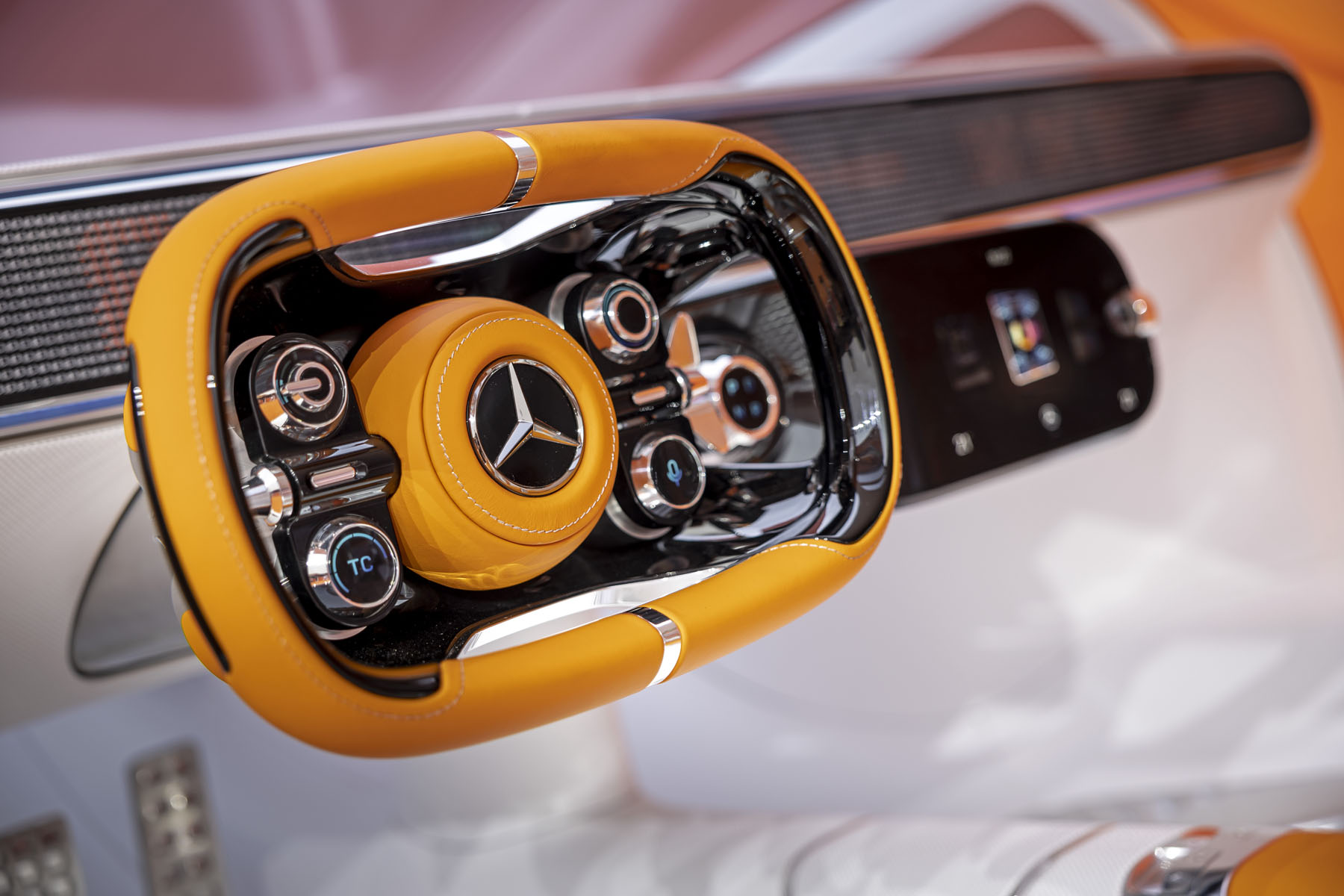
Futuristic and luxury combined
The interior design of the Vision One-Eleven reflects future luxury based on a progressive color concept and extraordinary material combinations. The richly contrasting colors and materials attract attention at first glance: Large surfaces such as the dashboard are upholstered in white fabric displaying a tech-look honeycomb structure. The material is made from 100-percent recycled polyester. Other elements such as the armrests on the sills and center console, as well as the rear parcel shelf beneath the expansive rear windscreen, are clad in bright orange leather. This creates a smooth transition from interior to luggage compartment. The sustainably processed leather was tanned using coffee bean husks. Polished aluminum in the steering-wheel spokes and inlaid as straps across the armrests underscore the tech look and feel. The same applies to the brake and accelerator pedals, both of which are made from polished aluminum and floor mounted.
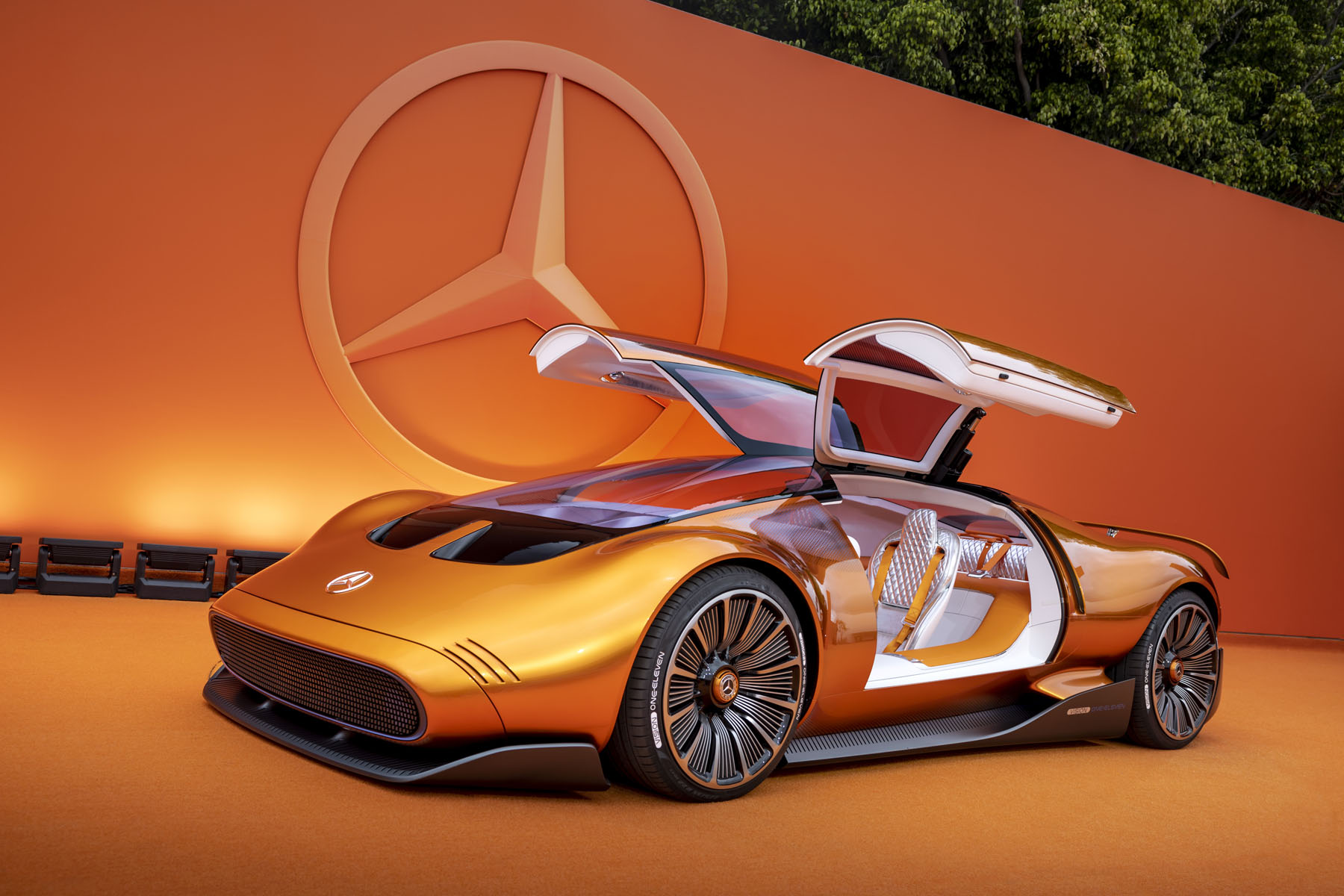
Otherwise, the interior equipment in the Mercedes-Benz Vision One-Eleven has been reduced to a minimum. Like the exterior, the task was to keep the number of add-on features to a bare minimum. The seats are good examples as they don’t follow the classic format. Instead, the seat cushions are integrated flush-fit into the floor. This creates the initial impression of the bucket seat in a Formula 1 race car. The orange four-point harness and its high-gloss polished buckle further reinforce the sporting character.
The only highly complex feature in the interior is the leather-clad steering wheel, which is fitted with various functional controls and state-of-the-art touch elements. This is complemented by a compact touchscreen with high-resolution display mounted to the side of the steering wheel and angled towards the driver. It shows all relevant vehicle information as required.
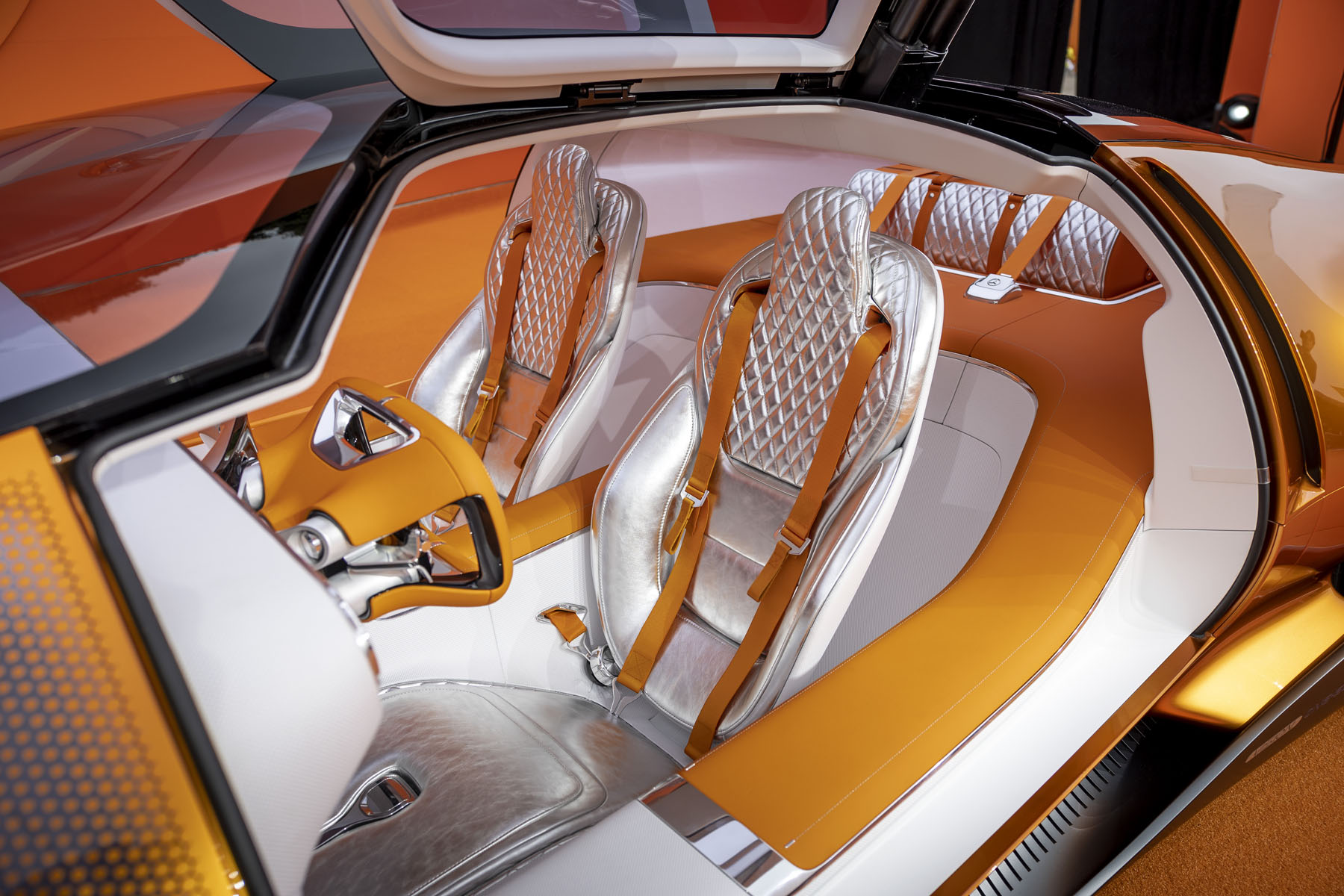
Fusion of analog and digital
The contrast to the modern interior is provided by the slender pixel display spanning the entire breadth of the dashboard, picking up on the form of the front and rear light bands. The pixel structure is intentionally coarse here as well, which gives the information displayed – such as the current speed – a strikingly bold appearance. Moreover, the 3D pixel display shows digital art pieces as a coarsely rasterized stream of QR codes in the style of “early digital” news tickers. This is done with the help of glass pixels that show a changing color gradient depending on the viewing angle. The corresponding real image then appears razor sharp on the high-resolution screen next to the steering wheel.
This combination of vastly differing representations of the same image embodies a further interpretation of the MBUX Hyperscreen with a focus on flexible interfaces. The retro-futuristic, 8-bit look thus creates an additional x-factor. The development in the Mercedes-Benz Vision One-Eleven reinforces the increasing fusion of physical and digital.
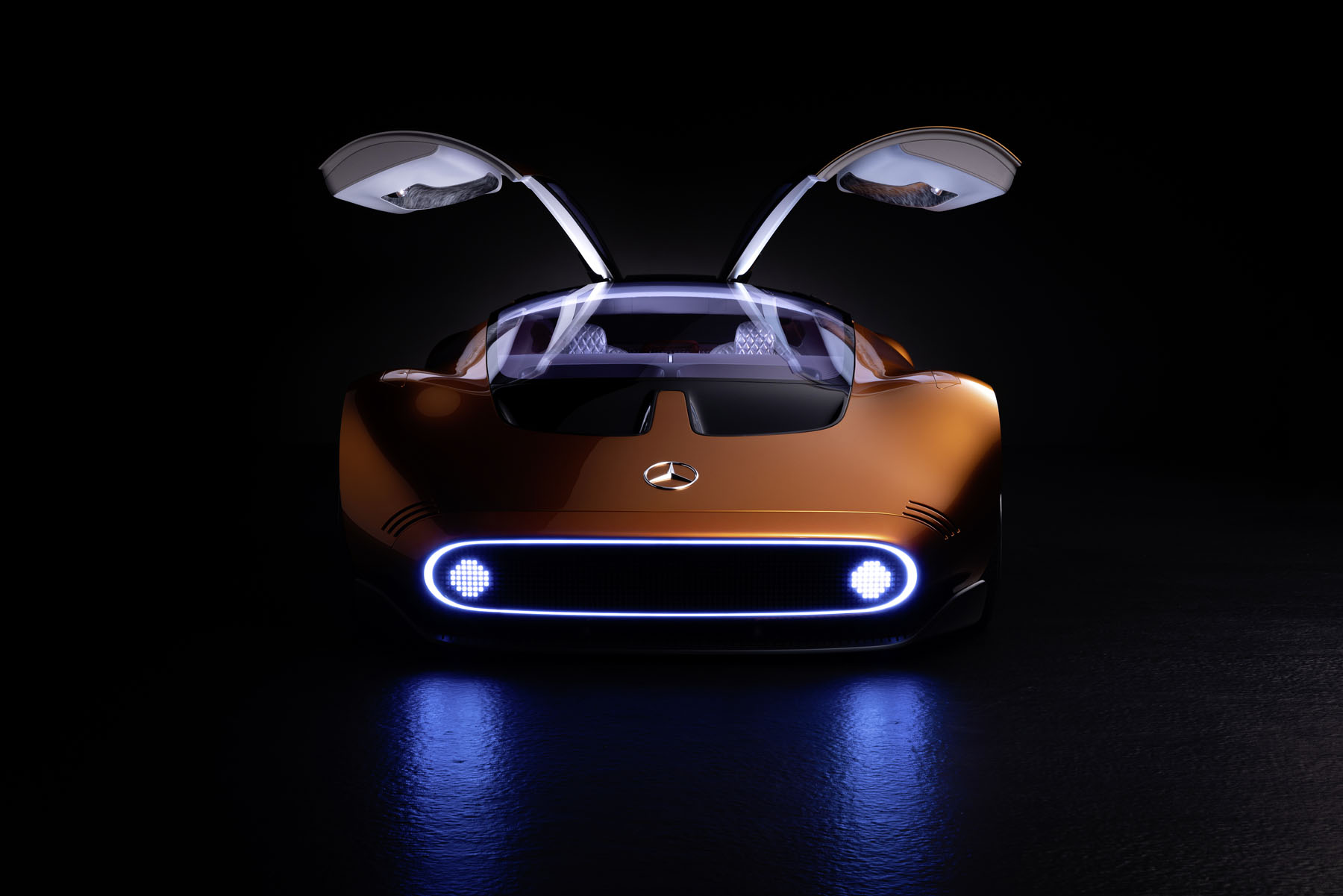
Augmented reality
Mercedes-Benz has been exploring the benefits of AR since the launch of the F015 concept car in 2015. The AR UI in this new car presents a vision of the future that works on two levels: the information attached to the dashboard and information placed in the environment inside and outside the car. This marks the next step from screen-based UI with Mercedes-Benz intuitive zero-layer technology to an AR UI that arranges zero-layer elements around the user in space. Elements include modules, 3D icons and the navigation map. The control interface around the dashboard and steering wheel is also augmented with additional contextualized information attached to actual objects such as buttons or switches.
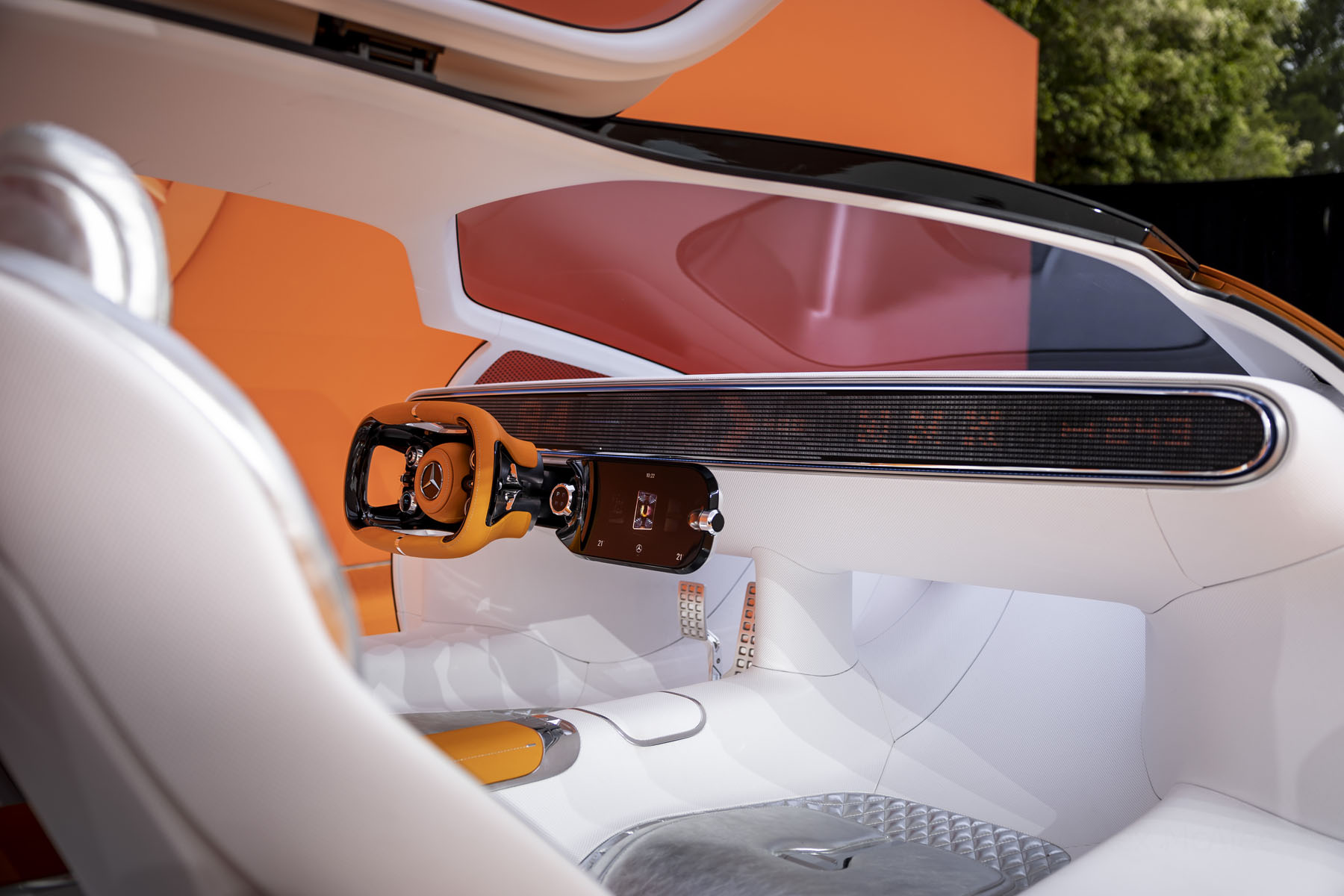
The 180-degree AR view incorporates the world outside the virtual prototype – fusing the car effortlessly with its surroundings and placing the driver at the center. Map elements are projected into the environment, which is enriched with further information such as places of interests or hidden hazards such as roadworks beyond a bend. With this X-ray view, the system enhances situational awareness by blending out unimportant details to create an uncluttered image of relevant input. Elements that obstruct the driver’s line of sight – such as the A-pillar, doors or even the bonnet – then appear “transparent”. Mercedes-Benz designers and experts worked with the technical specialists at Magic Leap to develop and refine the AR experience showcased in the Vision One-Eleven using the highly advanced Magic Leap 2 AR glasses.
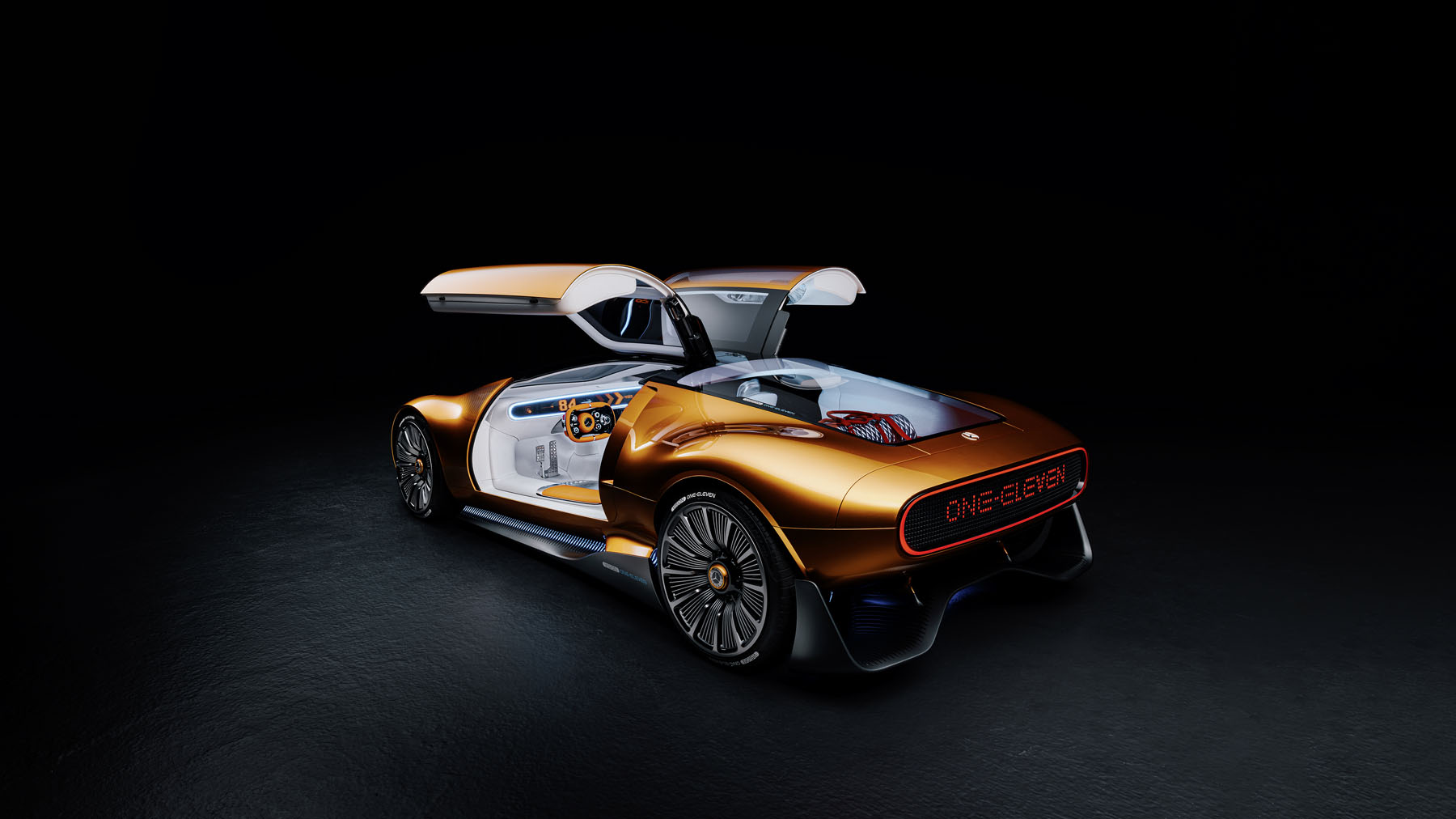
Axial-flux motor and all-new battery technology
Technology highlights include a new battery concept featuring high-performance liquid-cooled cylindrical cells with a novel cell chemistry. Once more, the extensive knowledge of the motorsport experts from Mercedes-AMG High Performance Powertrain in Brixworth found its way into this promising concept for future performance-oriented batteries. Aside from that, the Vision One-Eleven features an exceptionally powerful and advanced axial-flux motor from YASA. Mercedes-Benz is developing this technology together with YASA to large scale production maturity for its next-generation electric drives. YASA is a British electric-motor specialist based in Oxford and has been a 100-percent subsidiary of Mercedes-Benz AG since July 2021. The company has thus secured access to a unique future technology that has the potential to take electric mobility to a new level of performance.
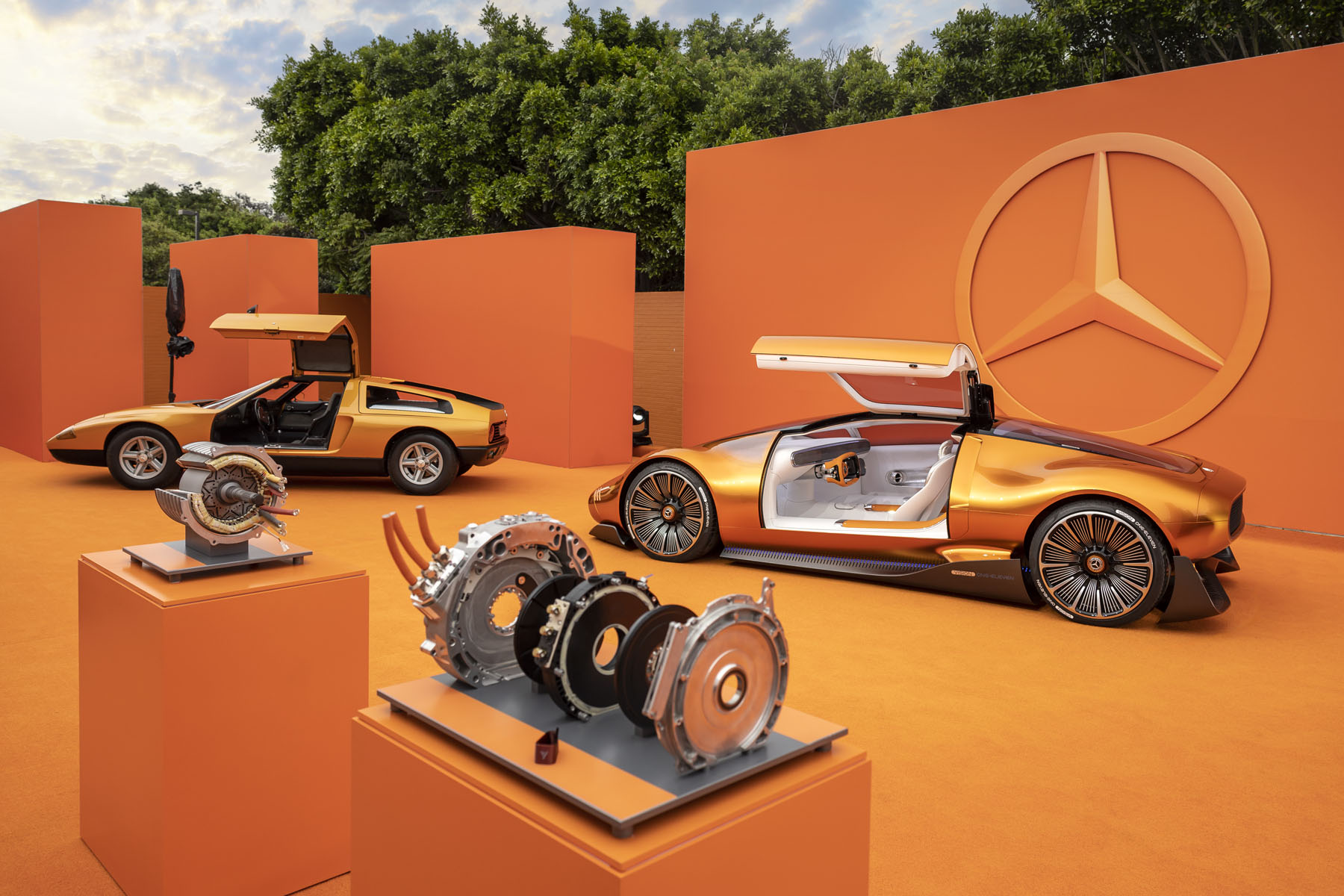
Tim Woolmer, Founder and Chief Technology Officer of YASA: “Axial-flux motors are significantly lighter and more compact, yet more powerful than comparable radial-flux motors currently used in 99 percent of all electric cars. In an axial-flux motor, the electromagnetic flow runs parallel to the motor’s rotational axis, which is highly efficient. In a radial-flux motor, the flow runs perpendicular to the rotational axis. Compared to radial-flux motors, they have considerably higher and more enduring power reserves, which delivers a whole new level of performance.”
Alongside its power and torque density, another major benefit is the narrow package, which reduces both its weight and dimensions. The weight of an axial-flux motor is just one third of that of current electric motors with the same power output. At the same time, it requires just one-third of the space occupied by a radial-flux motor. This opens up completely new options for engineers as well as new freedoms in the design of an electric vehicle as demonstrated by the Vision One-Eleven.
The future generation of YASA axial-flux motors will be produced at the Mercedes-Benz Berlin-Marienfelde plant. The motors manufactured there will be at the heart of the forthcoming powertrain for the performance segment.
